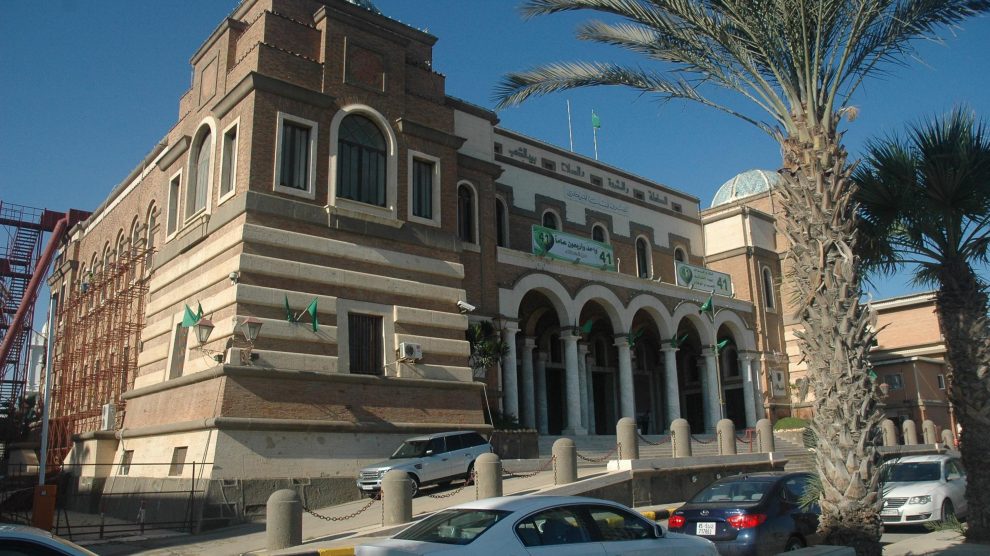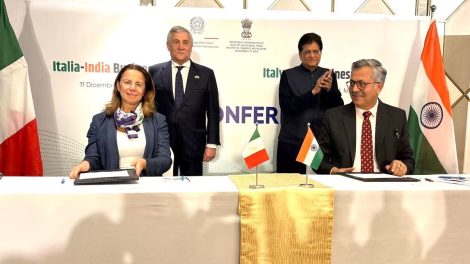At the ceremony held at Al-Khald Palace — first reported by Agenzia Nova — Italian Deputy Foreign Minister Giorgio Silli joined representatives of Libya’s Government of National Unity (GNU) and the Italian company Todini Costruzioni Generali, which has been awarded the contract.
What’s new: The 4.3 sub-section, stretching about 160 kilometers, connects Al-Aziziya to Ras Jedir, on the Tunisian border.
The big picture: It is part of the fourth section of Libya’s major coastal corridor (395 km in total), which also includes the Misurata–Al Khoms (4.1) and Al Khoms–Zuwara (4.2) segments, still under negotiation.
- The entire highway — 1,750 km from Emsaad (Egyptian border) to Ras Jedir (Tunisian border) — represents the largest bilateral infrastructure project ever launched between Italy and Libya.
Why it matters: The project stems from the 2008 Italy–Libya Treaty of Friendship, Partnership and Cooperation, which committed Rome to invest $5 billion in Libyan infrastructure.
- After years of suspension, today’s signing formally revives infrastructure cooperation between the two countries — a symbol of renewed political and economic engagement.
- The Libyan government has directly financed compensation for land expropriations, signaling a domestic push for national recovery.
What they’re saying:
- Giorgio Silli, Italian Deputy Foreign Minister: “This project embodies the friendship between Libya and Italy. It was born from the 2008 Treaty of Friendship and represents a tangible opportunity to turn the page of the past and look toward a shared future. The highway will serve the entire North Africa region, linking the Maghreb with the Mashreq through a development corridor that strengthens connectivity and exchange between peoples.”
- Abdulhamid Dabaiba, Libyan Prime Minister: “This highway is the most important development project in Libya’s history. We tell our friends in Italy that it was our government that reactivated this agreement after 15 years of suspension. Prime Minister Giorgia Meloni is a true friend of Libya — in deeds, not in words.”
- Mohammed Al-Shahoubi, Libyan Minister of Transport: “The highway represents the most important development artery in our country. It will enhance trade, logistics, and connectivity across North Africa. We thank the Italian government, especially Prime Minister Giorgia Meloni, for her commitment to implementing what was agreed under the Treaty of Friendship.”
- Ali Aqab, Director of the Umsaad–Ras Jedir Highway Authority: “The signing marks the concrete start of a project that had been stalled for years. It will revitalize the national economy and create new opportunities for young people. The partnership with Italy consolidates a historic relationship based on respect, common interests, and a shared vision for stability and development.”
Between the lines: Silli’s visit to Tripoli fits into Italy’s broader strategy to support Libya’s stabilization and to revitalize the 2008 Treaty, now viewed as a key diplomatic tool for Mediterranean dialogue.
- Libyan sources described the signing as “a crucial step toward modernizing the national road network and strengthening economic partnership with Italy.”
What’s next: The launch of works on sub-section 4.3 marks the operational start of the western phase of the Highway of Peace.
- Rome and Tripoli aim to finalize negotiations on the remaining segments (4.1 and 4.2) by 2026, completing a strategic corridor linking the Mediterranean from east to west.





